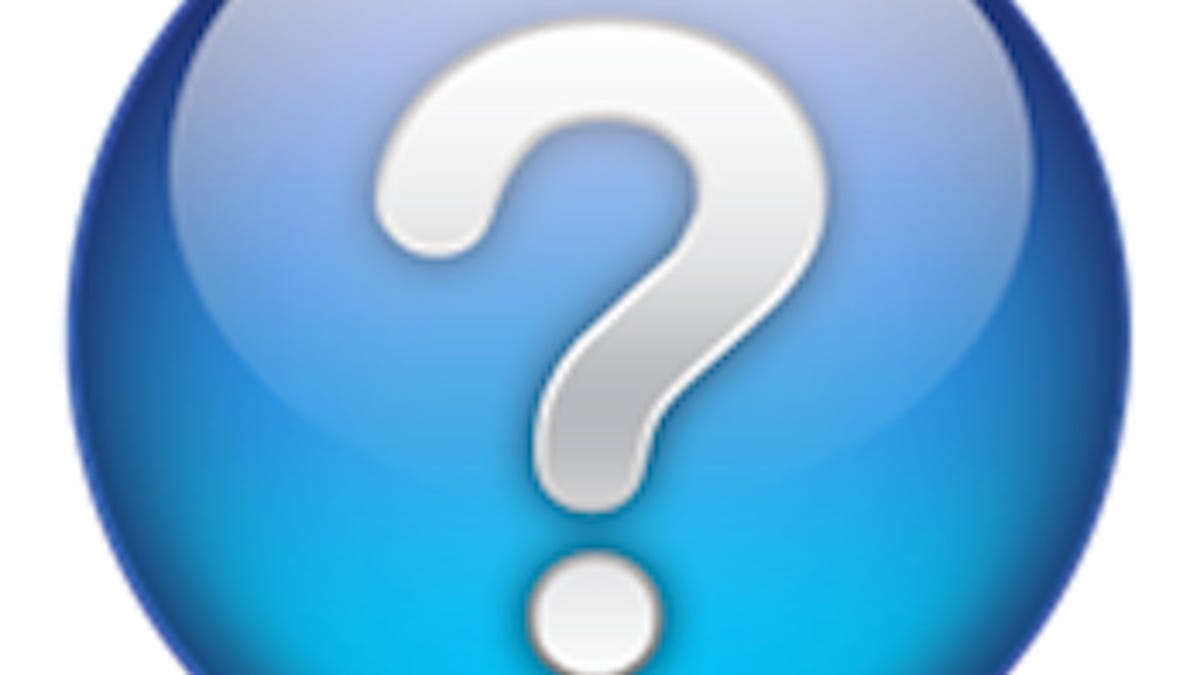Q&A: MacFixIt Answers
Questions answered about preparing for and upgrading to Mountain Lion.

MacFixIt Answers is a feature in which we answer questions e-mailed in by our readers.
This week readers wrote in with questions on whether an SSD or a larger HDD would be a better option especially for upgrading to Mountain Lion, how to manage calendars locally and on iCloud, managing the recovery HD partition when upgrading to Mountain Lion, and the 32-bit support options for Mountain Lion. We welcome views from readers, so if you have any suggestions or alternative approaches to these problems, post them in the comments!
Question: Upgrading to an SSD or a larger HDD?
MacFixIt reader Ed asks:
"I have a MacBook pro late 2008 model and my HDD disk 250 GB, but I notice that the disk is running slower prompting me to fear it will fail at some point. This after doing all kinds of twitching and optimization of drive using disk utility. I want to upgrade to a larger drive and I'm debating between a 750 GB 7200 RPM HD vs. a 250 GB SSD.
Would my MacBook pro support either one of them? Or what would you recommend between these two or others? My concern is if my model will support new versions of SSD drives. I'm currently using snow leopard and will be upgrading to mountain lion."
Answer:
Your system should run either of those drive types just fine. Your computer uses the same SATA connections that both of those drives will have, and all use standardized connection protocols that should be fully compatible with each other. Unless you need the extra space, I would recommend the SSD as it will provide you a much faster experience overall.
Question: How OS X manages calendars locally and on iCloud
MacFixIt reader Robert asks:
"Using Lion, if you allow calendars and contacts to be updated, they are deleted on your Mac and available only via cache from the last connection to iCloud. Will Mountain Lion do the same, or will it retain your contact and calendar files and update them from iCloud?"
Answer:
In Lion the calendars are all stored in the username/Library/Calendars/ folder. The calendars are in the CalDAV format and include local calendars and those synced to iCloud. In essence this provides a local store for the calendars that allows access without needing to be connected to iCloud. Upon updating them and subsequently connecting to iCloud, the calendars will then be synced accordingly. There is no indication that this setup is changing in Mountain Lion, especially since Apple's calendaring services are separate from the OS; however, ultimately we will have to wait and see.
Question: Managing the Recovery HD partition when upgrading to Mountain Lion
MacFixIt reader Chris asks:
"What is the best way to proceed when installing Mountain Lion with respect to the Recovery HD? Should I keep the existing Recovery HD partition attached to the main volume and erase both, ready for the ML installation (this assumes that the ML Recovery HD will keep the same size), or should I delete the Recovery HD, expand the main volume to recover the little space used for the Recovery HD and then erase the volume? ML will then create its own Recovery HD as needed."
Answer:
There is very little chance that this partition will be corrupted or have any faults in it that would require you to format or remove it. If you want to do a clean installation then download the Mountain Lion installer when it is released and follow my instructions for creating a boot disc (see here), which can also be done on a USB drive or external hard drive. Next boot to the installer and use Disk Utility to erase the boot drive, followed by running the OS X installer.
However, if you do decide to remove the Recovery HD partition in this process, then instead of resizing your partitions and managing them individually, simply select your hard-drive device in Disk Utility and repartition it with one partition using the Partition tab. After this is done, quit Disk Utility and use the OS X installer to install Mountain Lion to recreate the Recovery HD and install the OS.
Be sure to back up your data (preferably with Time Machine) before doing this.
Question: 32-bit support in Mountain Lion
MacFixIt reader Bill asks:
"I have a 2011 model iMac (current model) with a Sandy Bridge processor, so it should be able to run Mountain Lion. However, I need to know if Mountain Lion will run 32 bit Intel compatible software. I am using a program called Logitech Media Server (formerly called Squeezebox Server). When I open this program in System Preferences, it always tells me to click to restart it in 32 bit mode. So, my question is, will it be able to run in 32 bit mode with Mountain Lion?"
Answer:
Mountain Lion will run 32-bit applications and programs; however, it will not have a 32-bit kernel, so if a specific software package requires this (mainly kernel extensions) then it will not run. Most should not require this, and should run just fine. Unfortunately your software package seems to be one of those that requires the 32-bit kernel.
Questions? Comments? Have a fix? Post them below or
e-mail us!
Be sure to check us out on Twitter and the CNET Mac forums.

